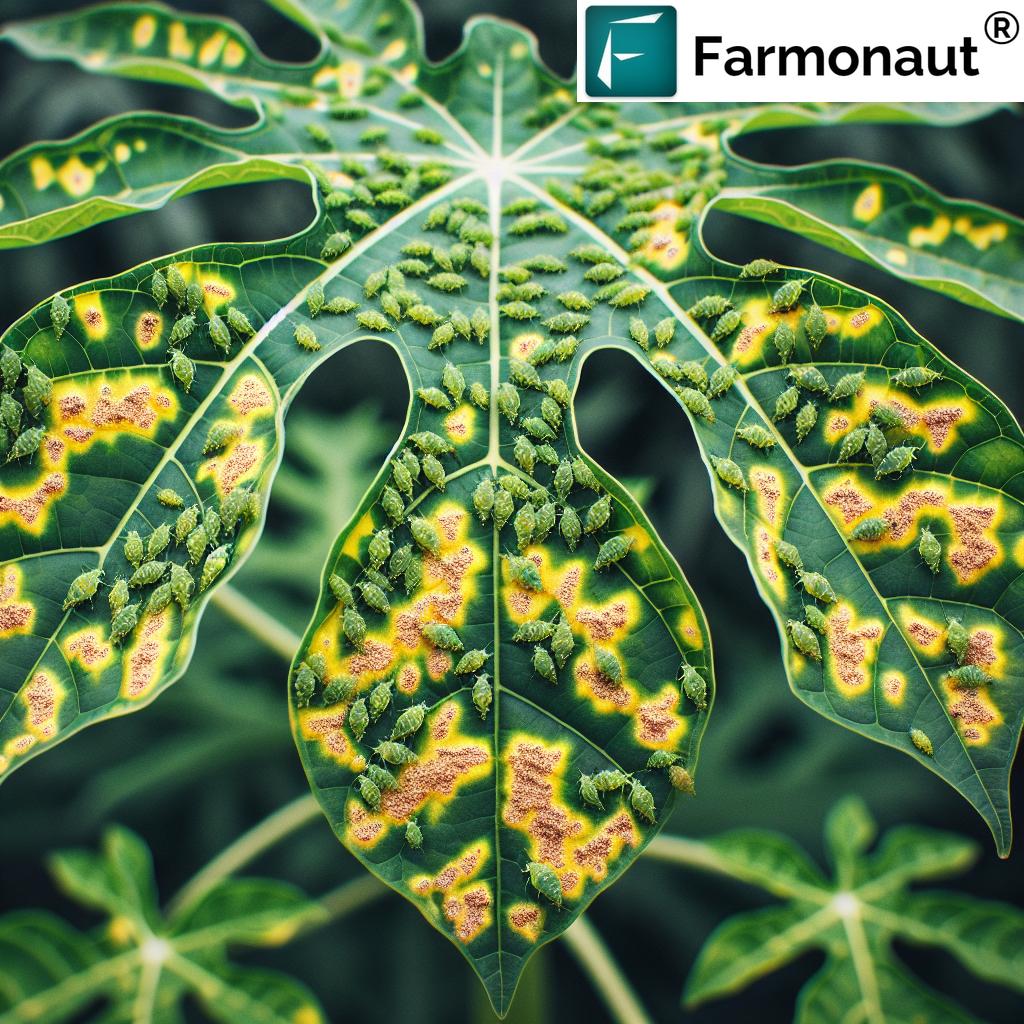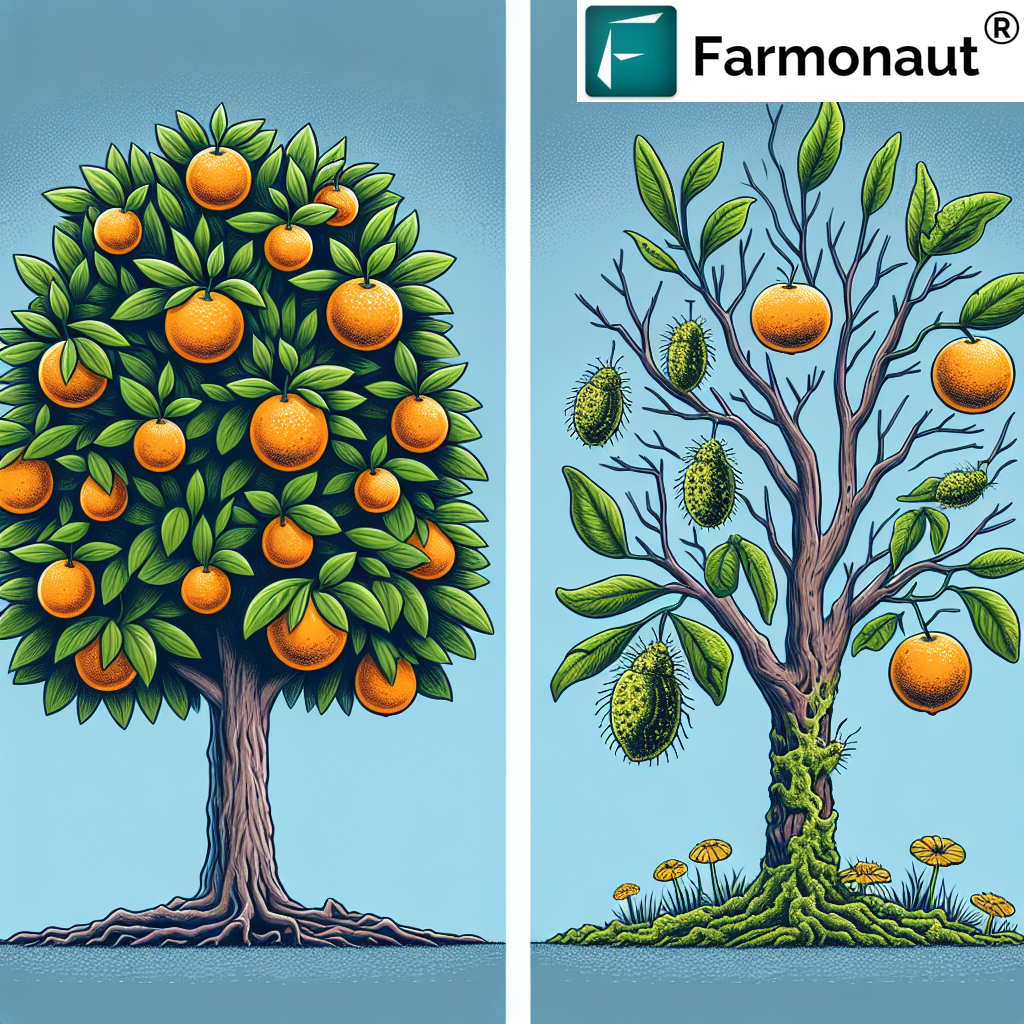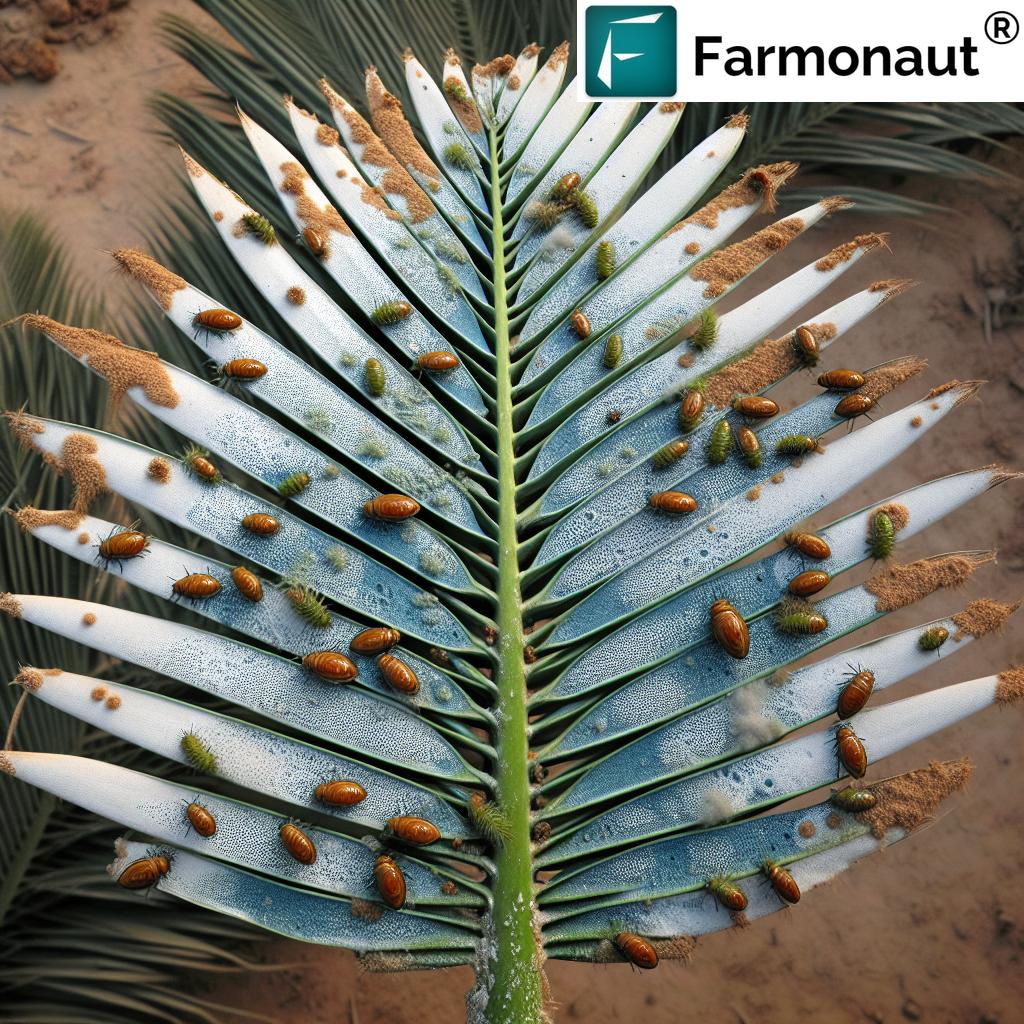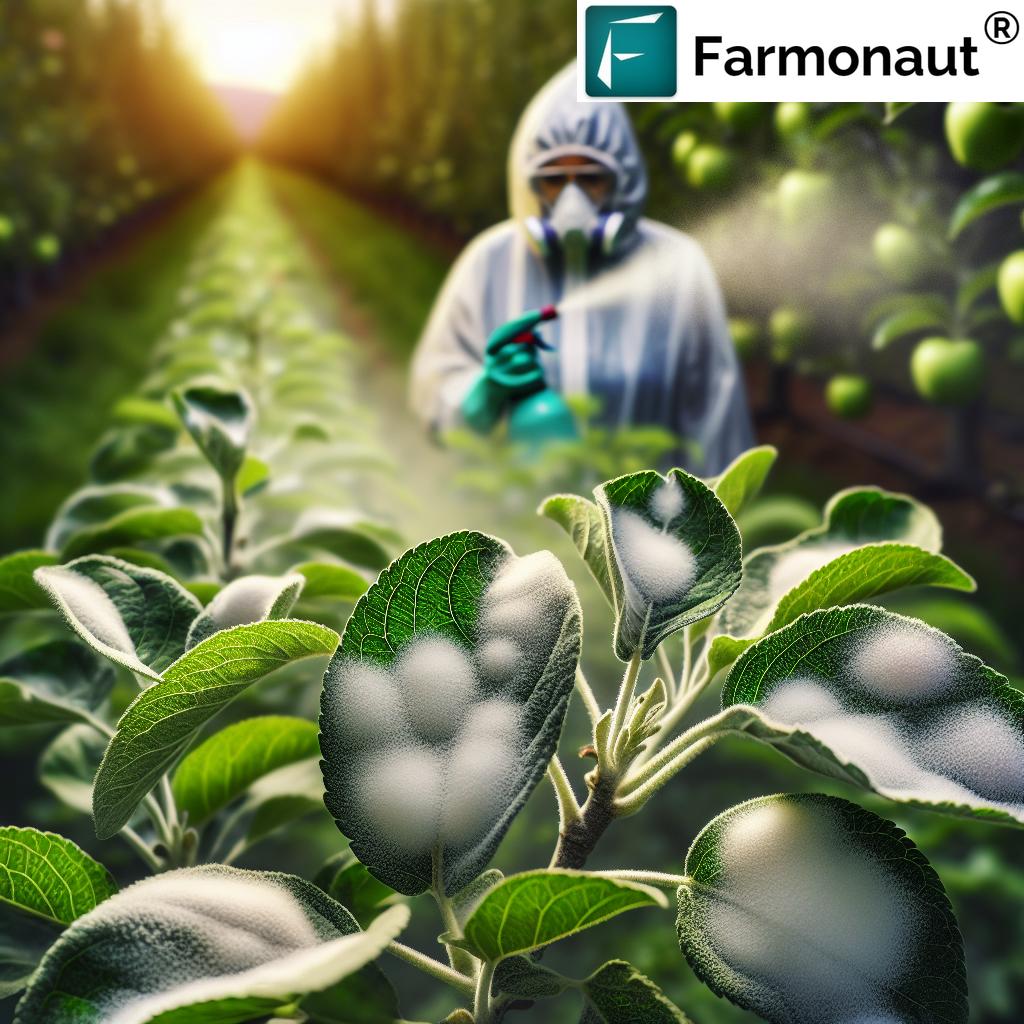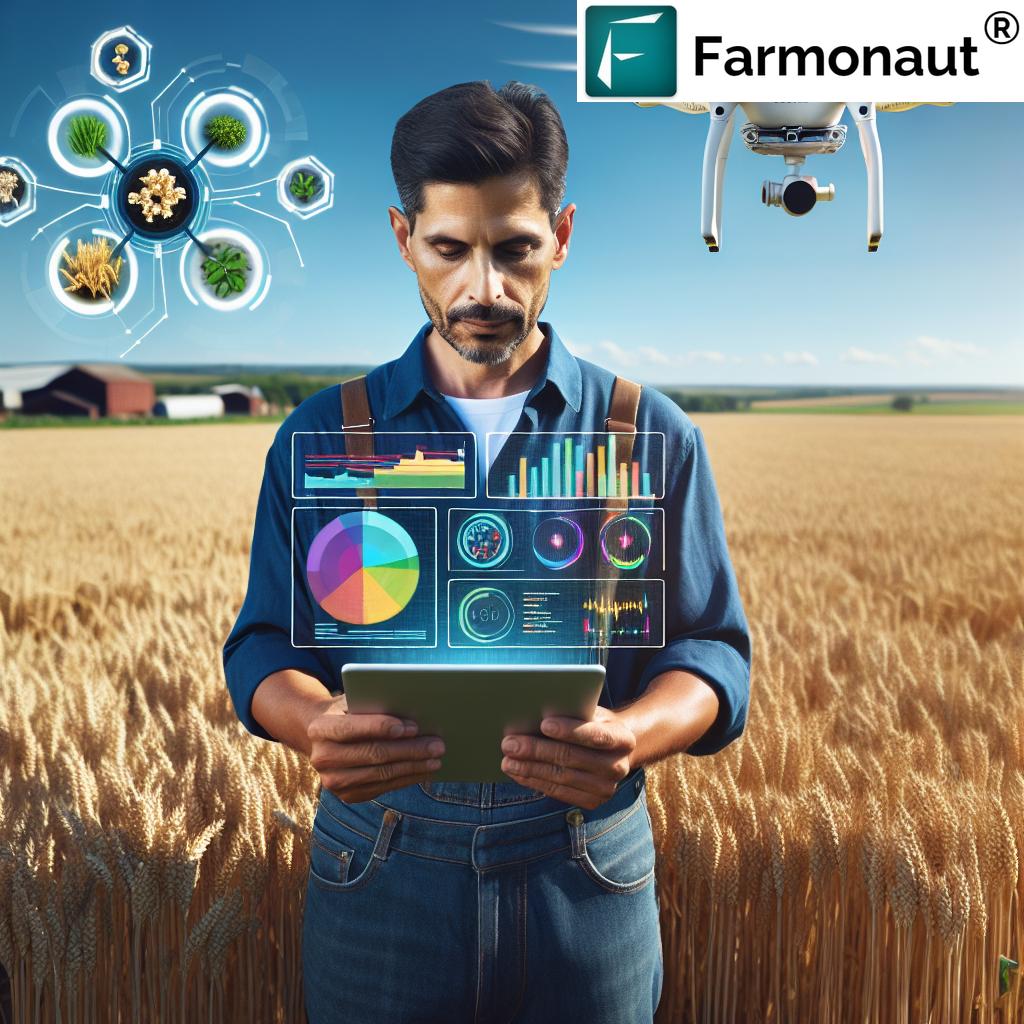
Revolutionizing Agriculture: How Digital Farming Tools Boost Crop Performance and Sustainability
In the ever-evolving landscape of modern agriculture, we find ourselves at the forefront of a digital revolution that is transforming the way we approach farming. As climate change continues to pose challenges to traditional agricultural practices, the integration of digital farming tools has become not just beneficial, but essential for ensuring crop performance, sustainability, and the future of food security. In this comprehensive exploration, we will delve into the world of digital agriculture, examining how innovative technologies are empowering farmers, optimizing resource use, and paving the way for a more sustainable and productive future in farming.
The Rise of Digital Agriculture
Digital agriculture, also known as smart farming or precision agriculture, represents a paradigm shift in how we manage our farms and fields. By leveraging advanced technologies such as satellite imagery, IoT sensors, artificial intelligence, and big data analytics, digital agriculture provides farmers with unprecedented insights into their operations. This data-driven approach enables more precise decision-making, leading to improved crop yields, reduced environmental impact, and increased overall farm productivity.
Key Components of Digital Farming
- Satellite Imagery and Remote Sensing: Providing a bird’s-eye view of crop health and field conditions
- IoT Sensors: Collecting real-time data on soil moisture, temperature, and other critical parameters
- AI and Machine Learning: Analyzing complex data sets to generate actionable insights
- Farm Management Software: Centralizing data and facilitating informed decision-making
- Variable Rate Technology: Enabling precise application of inputs based on field variability
The Power of Data in Modern Farming
At the heart of digital agriculture lies data – vast amounts of information collected from various sources that, when properly analyzed and interpreted, can revolutionize farming practices. This data-centric approach allows farmers to move away from blanket solutions and towards tailored strategies that address the specific needs of each field, crop, and even individual plants.
Types of Agricultural Data
- Climate Data: Historical and real-time weather information
- Soil Data: Composition, nutrient levels, and moisture content
- Crop Data: Growth stages, health indicators, and yield predictions
- Equipment Data: Performance metrics and maintenance schedules
- Market Data: Price trends and demand forecasts
By integrating these diverse data streams, farmers can gain a holistic view of their operations, enabling them to make more informed decisions about planting, fertilization, irrigation, and harvesting.
Enhancing Crop Performance through Digital Tools
One of the most significant benefits of digital farming tools is their ability to enhance crop performance. By providing detailed insights into field conditions and crop health, these technologies enable farmers to optimize their management practices and maximize yields.
Precision Planting
Digital tools allow for precision planting by considering factors such as soil type, topography, and historical yield data. Variable rate planting technologies adjust seed rates and depths on-the-go, ensuring optimal plant populations across the field. This precision not only improves crop emergence but also sets the stage for better overall performance throughout the growing season.
Crop Health Monitoring
Satellite imagery and drone-based sensors provide regular updates on crop health, allowing farmers to detect issues such as pest infestations, diseases, or nutrient deficiencies early on. This early detection enables prompt intervention, minimizing crop damage and ensuring optimal growth conditions.
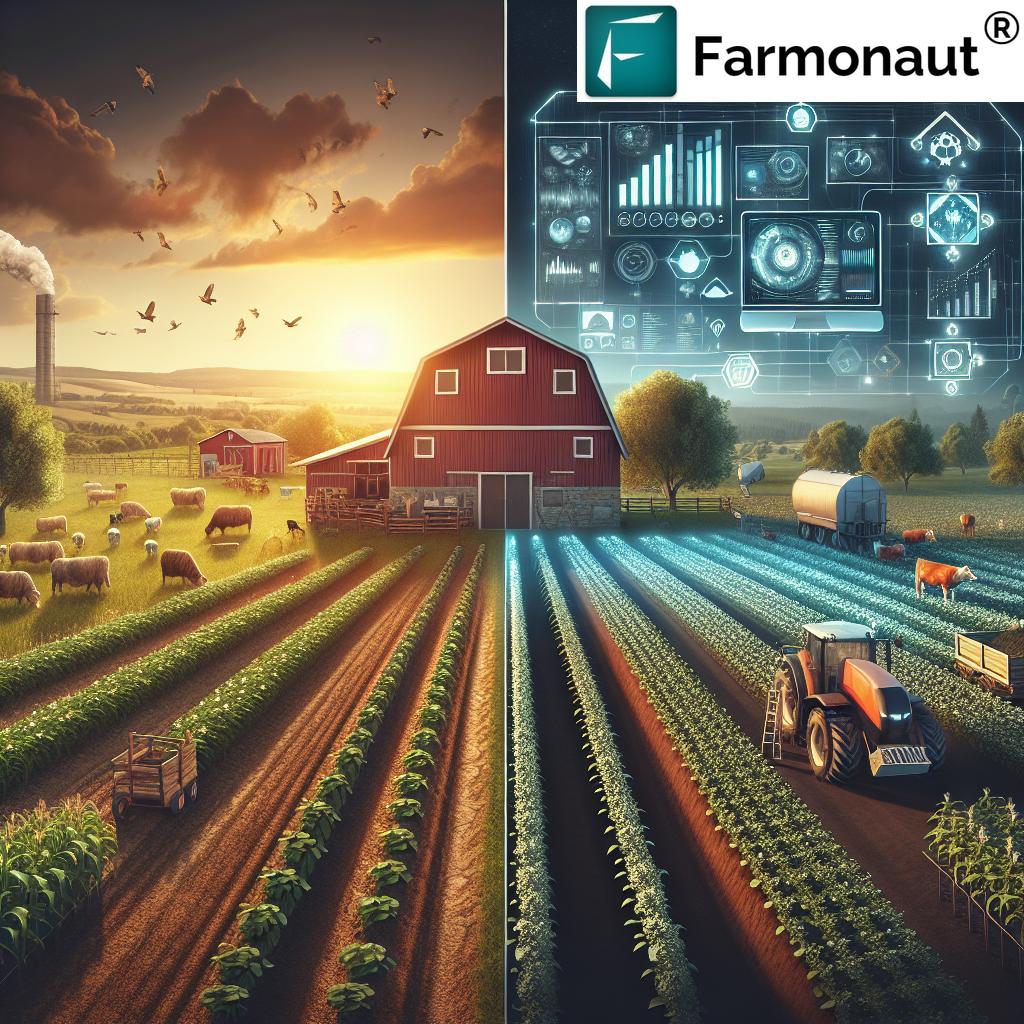
Fertility Management
Digital farming tools enable precise fertility management through variable rate application of fertilizers. By analyzing soil nutrient maps and crop health data, farmers can apply the right amount of nutrients exactly where they’re needed, reducing waste and optimizing crop uptake.
Irrigation Optimization
Smart irrigation systems use soil moisture sensors and weather data to determine optimal watering schedules. This precision approach ensures that crops receive the right amount of water at the right time, preventing both water stress and over-irrigation.
Driving Sustainability in Agriculture
As the global population continues to grow and climate change intensifies, the need for sustainable agricultural practices has never been more critical. Digital farming tools play a crucial role in promoting sustainability by optimizing resource use and minimizing environmental impact.
Resource Efficiency
By enabling precise application of inputs such as water, fertilizers, and pesticides, digital farming tools significantly reduce waste and environmental pollution. This not only benefits the ecosystem but also improves farm profitability by lowering input costs.
Soil Conservation
Digital tools help farmers implement conservation tillage practices by providing detailed soil health data. This information allows for more informed decisions about soil management, leading to improved soil structure, increased organic matter content, and reduced erosion.
Carbon Sequestration
Precision agriculture techniques enabled by digital tools can contribute to carbon sequestration efforts. By optimizing crop growth and minimizing soil disturbance, these practices help increase the amount of carbon stored in the soil, mitigating greenhouse gas emissions.
Biodiversity Preservation
Digital farming tools can help identify and protect sensitive areas within agricultural landscapes, promoting biodiversity. By precisely targeting inputs and minimizing chemical use, these technologies reduce the impact on non-target species and ecosystems.
Empowering Farmers with Actionable Insights
One of the most powerful aspects of digital farming tools is their ability to transform raw data into actionable insights. These insights empower farmers to make more informed decisions, leading to improved farm management and increased productivity.
Performance Analysis
Digital platforms provide comprehensive performance analysis tools that allow farmers to evaluate the effectiveness of their management practices. By comparing yield data with input applications, weather conditions, and other variables, farmers can identify areas for improvement and refine their strategies.
Predictive Analytics
Advanced AI and machine learning algorithms can analyze historical data and current conditions to predict future outcomes. This predictive capability helps farmers anticipate potential issues, such as pest outbreaks or adverse weather events, allowing for proactive management.
Benchmarking
Digital farming platforms often include benchmarking features that allow farmers to compare their performance against industry standards or similar operations. This comparative analysis helps identify best practices and areas where improvements can be made.
Decision Support Systems
Integrated decision support systems combine various data sources to provide farmers with specific recommendations for crop management. These AI-powered advisories can guide farmers on optimal planting dates, fertilizer applications, and pest control measures, among other critical decisions.
Overcoming Challenges in Digital Agriculture Adoption
While the benefits of digital farming tools are clear, their adoption is not without challenges. Addressing these obstacles is crucial for the widespread implementation of digital agriculture practices.
Technological Barriers
Many farmers, especially in rural areas, may face challenges related to internet connectivity and access to advanced technologies. Improving rural infrastructure and developing offline-capable tools are essential steps in overcoming these barriers.
Data Privacy and Security
As digital farming relies heavily on data collection and analysis, concerns about data privacy and security are paramount. Implementing robust data protection measures and establishing clear guidelines for data ownership and usage are critical for building trust among farmers.
Cost of Implementation
The initial investment required for digital farming technologies can be significant, particularly for small-scale farmers. Developing more affordable solutions and providing financial support mechanisms can help overcome this challenge.
Digital Literacy
Many farmers may lack the technical skills necessary to fully utilize digital farming tools. Providing comprehensive training programs and user-friendly interfaces is essential for successful adoption.
The Future of Digital Agriculture
As we look to the future, the potential for digital agriculture to transform farming practices and address global food security challenges is immense. Several emerging trends are shaping the future of this field:
Integration of Blockchain Technology
Blockchain technology is being integrated into digital farming platforms to enhance traceability and transparency in the food supply chain. This integration can help build consumer trust and support fair pricing for farmers.
Advanced Robotics and Automation
The development of autonomous farming equipment and robotic systems is set to revolutionize field operations. These technologies promise to increase efficiency, reduce labor costs, and minimize human error in farming tasks.
Edge Computing and 5G Networks
The rollout of 5G networks and advancements in edge computing will enable real-time data processing and decision-making in the field. This will further enhance the precision and responsiveness of digital farming systems.
Vertical and Urban Farming Integration
Digital farming tools are being adapted for vertical and urban farming environments, enabling efficient food production in urban areas and controlled environments. This integration will play a crucial role in addressing food security challenges in densely populated regions.
Comparison: Traditional Farming vs. Farmonaut System
| Feature | Traditional Farming | Farmonaut System |
|---|---|---|
| Field Monitoring | Manual, time-consuming, and potentially inaccurate | Automated, real-time satellite imagery for comprehensive field monitoring |
| Crop Health Analysis | Visual inspection, subjective, and limited in scope | AI-powered analysis of multispectral imagery for early detection of issues |
| Resource Optimization | Generalized approach, potential for over or under-utilization | Precision application based on field variability and crop needs |
| Data-Driven Decisions | Reliance on experience and limited data points | Comprehensive data analysis and AI-driven insights for informed decision-making |
| Climate Adaptation | Reactive approach to weather changes | Proactive strategies based on advanced weather forecasting and historical data analysis |
Embracing Digital Agriculture with Farmonaut
At Farmonaut, we are committed to driving the digital agriculture revolution by providing cutting-edge tools and technologies that empower farmers to optimize their operations, increase productivity, and promote sustainability. Our comprehensive platform integrates satellite imagery, AI-powered analytics, and user-friendly interfaces to deliver actionable insights directly to farmers’ fingertips.
Key Features of Farmonaut’s Digital Farming Platform
- Satellite-Based Crop Monitoring: Regular field health updates using advanced multispectral imagery
- AI-Driven Advisory System: Personalized recommendations for crop management based on field-specific data
- Weather Forecasting and Analysis: Accurate, localized weather predictions to inform farm operations
- Resource Management Tools: Precision application maps for fertilizers, pesticides, and irrigation
- Performance Analytics: Comprehensive yield analysis and benchmarking tools
- Mobile Accessibility: Full platform functionality available on mobile devices for on-the-go management
By leveraging these powerful tools, farmers can make more informed decisions, optimize their resource use, and ultimately achieve higher yields while minimizing environmental impact. Our platform is designed to be scalable and adaptable, catering to the needs of both small-scale farmers and large agricultural enterprises.
To experience the transformative power of digital agriculture firsthand, we invite you to explore our platform and see how it can revolutionize your farming practices. Visit Farmonaut’s Web Application or download our mobile app for Android or iOS to get started.
For developers and businesses looking to integrate our powerful agricultural data into their own systems, we offer comprehensive API access. Explore our API documentation to learn more about leveraging Farmonaut’s satellite and weather data for your applications.
Frequently Asked Questions (FAQ)
Q: What is digital agriculture?
A: Digital agriculture, also known as smart farming or precision agriculture, refers to the use of advanced technologies such as satellite imagery, IoT sensors, AI, and data analytics to optimize farming practices, improve crop yields, and promote sustainability in agriculture.
Q: How does satellite imagery help in farming?
A: Satellite imagery provides farmers with a comprehensive view of their fields, allowing them to monitor crop health, detect issues early, and make informed decisions about resource allocation. It enables precision farming practices without the need for extensive ground-based sensors.
Q: What are the benefits of using digital farming tools?
A: Digital farming tools offer numerous benefits, including improved crop yields, optimized resource use, reduced environmental impact, early detection of crop health issues, and data-driven decision-making capabilities.
Q: Is digital agriculture suitable for small-scale farmers?
A: Yes, digital agriculture tools can be adapted for small-scale farmers. Platforms like Farmonaut offer scalable solutions that cater to farms of all sizes, making precision agriculture accessible and affordable for smaller operations.
Q: How does AI contribute to digital farming?
A: AI plays a crucial role in digital farming by analyzing complex data sets, generating predictive insights, and providing personalized recommendations for crop management. It helps farmers make more informed decisions and optimize their operations.
Q: Can digital farming tools help in adapting to climate change?
A: Absolutely. Digital farming tools provide valuable data on weather patterns, soil conditions, and crop performance, enabling farmers to adapt their practices to changing climate conditions more effectively.
Q: How secure is the data collected by digital farming platforms?
A: Reputable digital farming platforms prioritize data security and privacy. At Farmonaut, we implement robust encryption and data protection measures to ensure the confidentiality and integrity of our users’ information.
Q: What is variable rate technology in agriculture?
A: Variable rate technology allows for the precise application of inputs such as seeds, fertilizers, and pesticides based on field variability. It optimizes resource use by applying the right amount of inputs exactly where they’re needed.
Q: How can I get started with digital farming?
A: To get started with digital farming, you can explore platforms like Farmonaut that offer comprehensive digital agriculture solutions. Visit our website or download our mobile app to begin your journey into precision agriculture.
Q: Are there any training resources available for learning about digital farming tools?
A: Yes, many digital farming platforms, including Farmonaut, offer training resources, tutorials, and customer support to help farmers learn how to effectively use digital tools in their operations.
Subscribe to Farmonaut
Ready to transform your farming practices with cutting-edge digital tools? Subscribe to Farmonaut today and unlock the full potential of your agricultural operations. Choose the plan that best fits your needs and start your journey towards more efficient, productive, and sustainable farming.
By embracing digital agriculture, we’re not just improving farm productivity; we’re paving the way for a more sustainable and food-secure future. Join us in revolutionizing agriculture, one field at a time.




